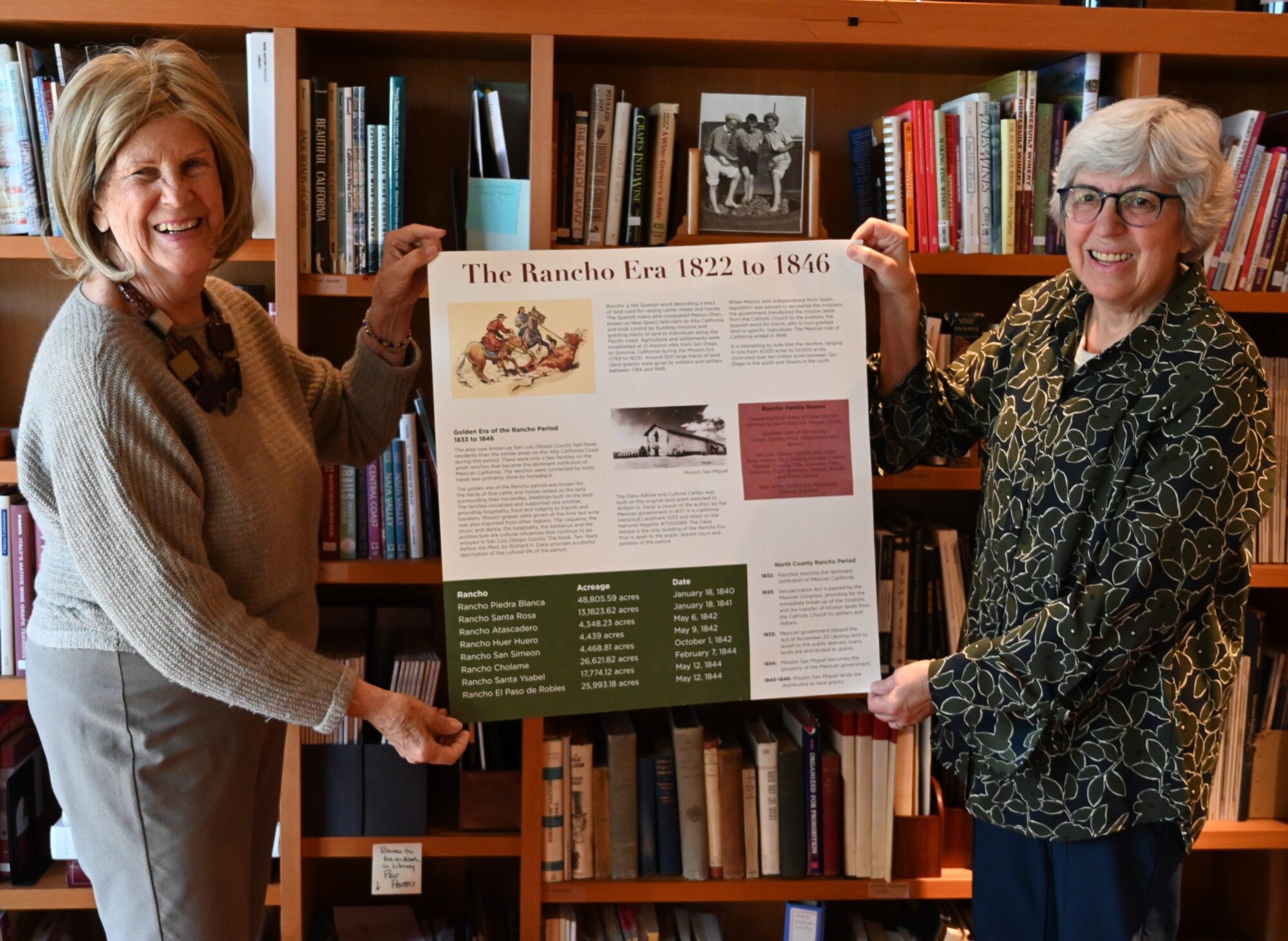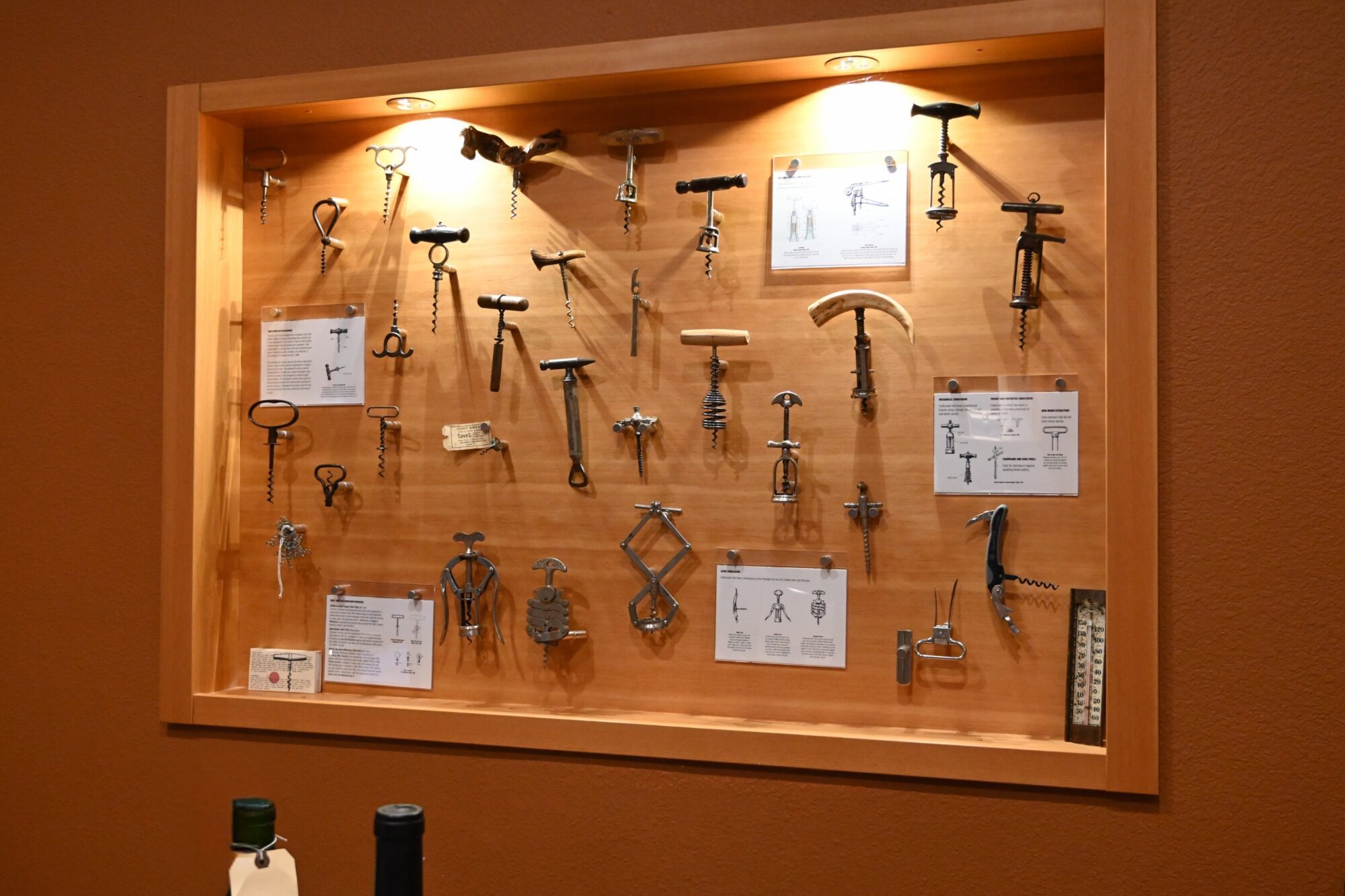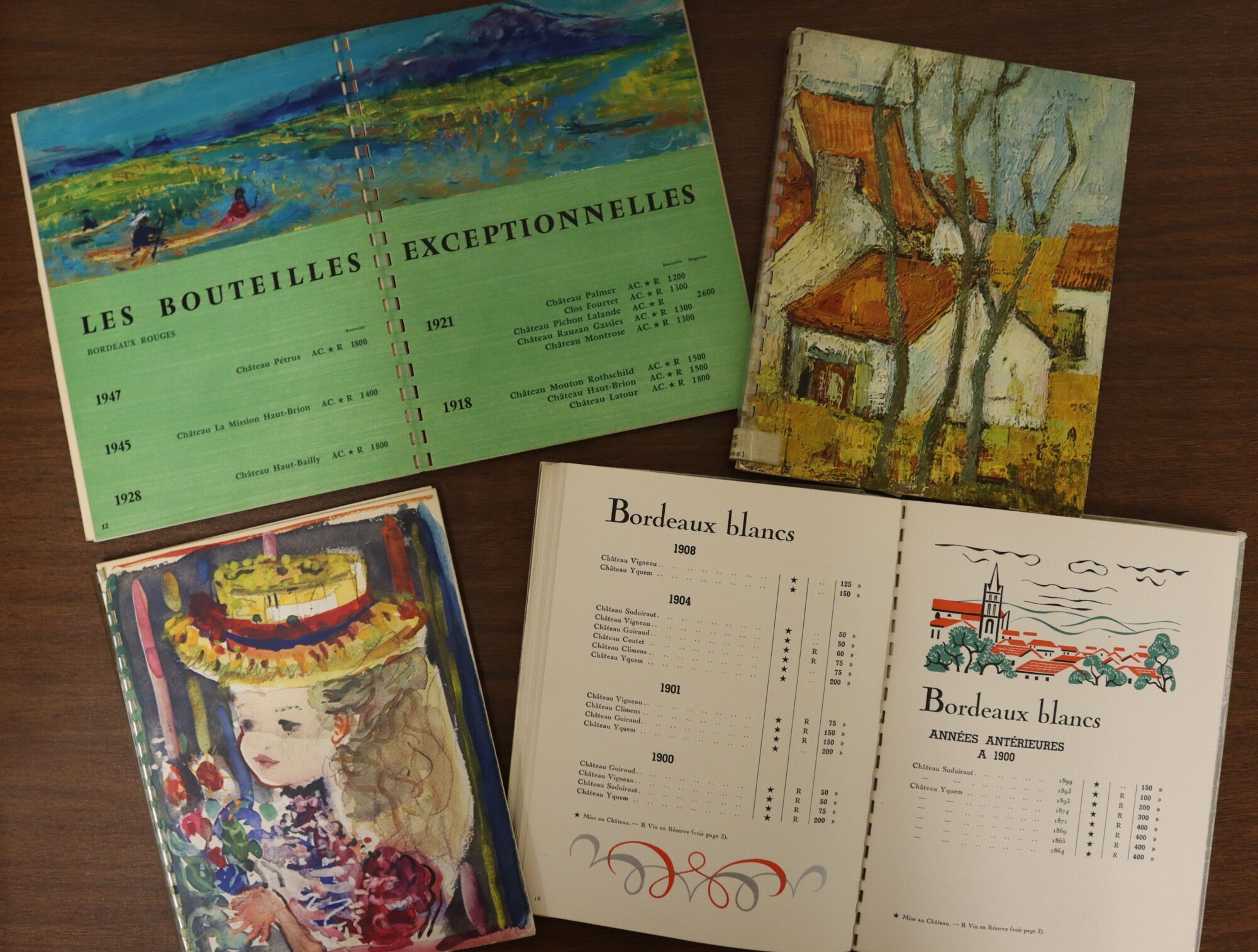Rooted in the Land
Gift to UC Davis Library Helps Preserve San Luis Obispo’s Wine Heritage for Future Generations
Walking through the hillsides of San Luis Obispo County, Libbie Agran didn’t just see vineyards. She saw history — much of it untold, and much of it, she feared, at risk of being lost forever.
She fell in love with San Luis Obispo’s wine country on a quintessential Central Coast afternoon in 2001. The sun slanted low over the Santa Lucia Mountains, the marine air mingling with the earthy scent of vines. For Agran, a former wealth manager from Los Angeles who moved to San Luis Obispo in the early 2000s, these hills spoke not only of beauty but of stories and terroir.
“What drew me in was the land,” Agran said. “This landscape has a soul. The way the soil, climate and people come together here — it’s completely unique. That’s what terroir is about.”
From that inspiration came a mission: to document, preserve and share the region’s rich and complex wine history through the Wine History Project of San Luis Obispo County. And from that mission came a landmark gift to the UC Davis Library.
A Museum Without Walls
Established in 2015, the Wine History Project of San Luis Obispo County has become what Agran calls a “living museum” — a compilation of oral histories, art, films and exhibits.

The project grew out of deep engagement with the community. Agran and her team have interviewed more than 170 individuals in the local wine industry, created panel exhibits placed in vineyards and public spaces, and produced 13 documentary films that illuminate the wine region’s rich history.
“It doesn’t do any good to do the research if people don’t see it and make it part of their lives,” Agran said. “That’s why this project evolved into a living museum. It’s about engagement — bringing history to the vineyards, festivals and trails where people already are.”
Now, this extraordinary body of work will have a permanent home at UC Davis, ensuring the stories and artifacts Agran preserved remain accessible for generations. The project’s collection was recently donated to the UC Davis Library’s Archives and Special Collections, adding another dimension to what is considered by many to be the world’s most comprehensive wine research collection.
A Regional Identity, a National Legacy
The story of winemaking in San Luis Obispo County spans centuries and cultures — from Franciscan friars to Mexican land grantees to Italian immigrants who recognized the land’s promise. San Luis Obispo County’s wine heritage also is deeply rooted in the dedication of its growers, who have not only supplied grapes for local winemaking but also have been instrumental in producing table wine grapes that were blended into wines distributed nationwide for decades, underscoring their impact on the broader wine industry. Until recently, that history remained undocumented — tucked in trunks or fading memories.
Agran’s donation brings these stories to light, making them available to scholars, winemakers and communities eager to understand the deeper roots of the Central Coast’s wine culture.
“This history doesn’t belong in a drawer or a closet,” she said. “It belongs in the hands of students, historians, winemakers — anyone who wants to understand how this region came to be what it is today.”
The Wine History Project collection includes not only oral histories and research materials, but also artwork, wine labels, etched bottles, maps and winemaking tools. It even highlights the influence of modern players like Makers & Allies, a nationally recognized alcohol branding firm based in San Luis Obispo that has helped shape the visual identity of many regional and national wine brands.

To preserve this work and ensure broad access, Agran made a transformative gift to the UC Davis Library, which includes:
- A $250,000 cash donation to support discovery, access and visibility of the collection
- Copyrights to her books and 13 original documentaries
- Hundreds of oral histories, rare wine catalogs and works of art
- Cultural artifacts from the region’s diverse winemaking heritage.
The archive is being processed and will be made available for research, study, and instruction at a future date.
Inspired to Give by Other Wine Legends
Her inspiration to make the gift came from Warren Winiarski’s donation to the UC Davis Library and the university’s unmatched reputation for viticulture and enology research.
“UC Davis has the best wine library in the world,” Agran said. “I knew this work belonged there—not just for preservation, but for sharing.”
Audrey Russek, who leads the UC Davis Library’s strategic initiatives around distinctive collections in food, wine and other beverages, emphasized the significance of the donation.
“This collection is a tremendous addition to our holdings,” Russek said. “It not only captures the flavor of San Luis Obispo’s wine culture but also serves as a model for how regional histories can be preserved and shared. It will be an invaluable resource for researchers, educators and the wine industry alike.”
In recognition of the project’s significance, Agran will receive a Wine Lifetime Achievement Award from the San Luis Obispo County wine industry at the Mid-State Fair in Paso Robles on July 18.

A Call to Preserve California’s Terroir
While Agran’s work focuses on San Luis Obispo, her broader vision is statewide. She hopes this project will inspire other wine regions across California to take similar steps in documenting their local histories. This vision was another driving force behind donating her work to the UC Davis Library — that her successes in capturing her county’s history might serve as a model that other counties throughout the state can replicate.
“Each region has its own terroir — its own flavor, its own voice,” she said. “And each one deserves to be remembered. I want this model to inspire other communities to preserve their history while it’s still possible.”
A Final Toast
For Agran, walking those vine-lined hills more than 15 years ago ignited a lifelong calling. And now, through her gift to UC Davis, that spark will light the way for future generations of scholars, growers and wine aficionados.
“This is more than a donation,” she said. “It’s a love letter to this place, and an invitation for others to do the same.”
From Mission Grapes to Educational Revivals
The Wine History Project’s connection to UC Davis predates this donation. One of its most significant efforts was the rediscovery and revival of Mission grapes — descendants of vines first planted by Franciscan priests in the 18th century. Once believed lost, these varietals were sourced by Agran’s team and verified in partnership with the UC Davis Department of Viticulture and Enology, which ensured the health and disease-free status of the grapevines used in the project. They were then replanted in San Luis Obispo at the Dana Adobe in Nipomo, with wines now produced in homage to the area’s earliest winemakers.
Sarah Colwell is a freelance writer who specializes in serving higher education clients.